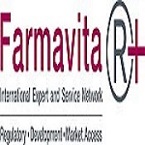About Conference
Organizing Committee cordially invites participants from all over the world to attend 24th International Conference on Environmental Chemistry and Engineering, Scheduled during August 02-03, 2023 at Rome, Italy mainly focused on the theme “Science & Environment Technologies: Latest Innovations in Earth Science and Geographic Information System”.
Environmental Chemistry conference aims to bring together the prominent researchers academic scientists, and research scholars to exchange and share their experiences on all aspects of Green Chemistry. It is also an interdisciplinary platform for researchers, practitioners and educators to present and discuss the most recent advances, trends, and concerns as well as practical challenges and solutions adopted in the fields of Environmental Chemistry.
24th International Conference on Environmental Chemistry and Engineering will focus on many interesting scientific sessions and covers all frontier topics in Environmental Chemistry which includes Principles in Environmental Chemistry , Green Catalysis, Green Materials, Green Synthesis and Designing, Greener Bioprocesses, Green Chemistry applications in industries, Green energy, Waste Valorization Techniques, Environmental Chemistry aspects, Environmental Economy, Sustainable flow chemistry, Green Engineering & Manufacturing, Green Polymers, Green Chemistry applications in different industries, Green Catalyst & Reagents and many more. In the coming years Environmental Chemistry is known as a specific field of science and technology. The focus is mainly on minimizing the hazards and maximizing the efficiency of any chemical choice. The conference also includes Keynote speeches by prominent personalities from around the globe in addition to both oral and poster presentations.
On behalf of Environmental Chemistry 2023. Organizing Committee is glad to invite contributions from the enthusiastic academicians, scientists to organize International Symposiums/Workshops that are both empirical and conceptual in exploring new dimensions of green chemistry challenges towards achieving the solutions.
Why to attend???
Meet experts and influencers face to face
Conferences provide a great opportunity to network where most people can help each other uncover ideas and spark inspiration.
Encounter new vendors and suppliers
Attending a conference allows you to grow and challenge yourself
Position Your Company as a Champion
Sessions & Tracks
Track 1: Astrochemistry
Astrochemistry is the study of the abundance and reactions of molecules in the universe, and their interaction with radiation.m, The discipline is an overlap of astronomy and chemistry. The word "astrochemistry" may be applied to both the Solar System and the interstellar medium. The study of the abundance of elements and isotope ratios in Solar System objects, such as meteorites, is also called Cosmochemistry, while the study of interstellar atoms and molecules and their interaction with radiation is sometimes called molecular astrophysics. The formation, atomic and chemical composition, evolution and fate of molecular sclouds is of special interest, because it is from these clouds that solar systems form.
Related Conferences: Environmental Chemistry Conferences | Global Environmental Chemistry Conferences | Green Chemistry Conference | Renewable Energy and Resources Conference | Environmental Research Conferences | Environmental Chemistry and Environmental Design Conferences | Chemistry Conferences | Environmental Toxicology and Health Chemistry Conferences
Related Societies and associations:
American Association for Clinical Chemistry | European Federation of Chemical Engineering | American Chemical Society | Federation of Asian Chemical Societies | International Association for the Properties of Water and Steam | International Association of Chemical Thermodynamics | International Association of Environmental Analytical Chemistry | American Crystallographic Association | American Institute of Chemical Engineers (AIChE) | International Ultraviolet Association | American Institute of Chemists(AIC) | Synthetic Organic Chemical Manufacturers Association | American Oil Chemists' Society | American Society for Mass Spectrometry |
Track 2: Chemical and Polymer Engineering
Polymer chemistry is a sub-discipline of chemistry that focuses on the chemical synthesis, structure, and chemical and physical properties of polymers and macromolecules. The principles and methods used within polymer chemistry are also applicable through a wide range of other chemistry sub-disciplines like organic chemistry, analytical chemistry, and physical chemistry. Many materials have polymeric structures, from fully inorganic metals and ceramics to DNA and other biological molecules, however, polymer chemistry is typically referred to in the context of synthetic, organic compositions. Synthetic polymers are ubiquitous in commercial materials and products in everyday use, commonly referred to as plastics, and rubbers, and are major components of composite materials. Polymer chemistry can also be included in the broader fields of polymer science or even nanotechnology, both of which can be described as encompassing polymer physics and polymer engineering
Related Conferences: Environmental Chemistry Conferences | Global Environmental Chemistry Conferences | Green Chemistry Conference | Renewable Energy and Resources Conference | Environmental Research Conferences | Environmental Chemistry and Environmental Design Conferences | Chemistry Conferences | Environmental Toxicology and Health Chemistry Conferences
Related Societies and associations:
American Association for Clinical Chemistry | European Federation of Chemical Engineering | American Chemical Society | Federation of Asian Chemical Societies | International Association for the Properties of Water and Steam | International Association of Chemical Thermodynamics | International Association of Environmental Analytical Chemistry | American Crystallographic Association | American Institute of Chemical Engineers (AIChE) | International Ultraviolet Association | American Institute of Chemists(AIC) | Synthetic Organic Chemical Manufacturers Association | American Oil Chemists' Society | American Society for Mass Spectrometry |
Track 3:Atmospheric Chemistry
Atmospheric chemistry is a branch of atmospheric science in which the chemistry of the Earth's atmosphere and that of other planets is studied. It is a multidisciplinary approach of research and draws on environmental chemistry, physics, meteorology, computer modeling, oceanography, geology and volcanology and other disciplines. Research is increasingly connected with other areas of study such as climatology.
Related Conferences: Environmental Chemistry Conferences | Global Environmental Chemistry Conferences | Green Chemistry Conference | Renewable Energy and Resources Conference | Environmental Research Conferences | Environmental Chemistry and Environmental Design Conferences | Chemistry Conferences | Environmental Toxicology and Health Chemistry Conferences
Related Societies and associations:
American Association for Clinical Chemistry | European Federation of Chemical Engineering | American Chemical Society | Federation of Asian Chemical Societies | International Association for the Properties of Water and Steam | International Association of Chemical Thermodynamics | International Association of Environmental Analytical Chemistry | American Crystallographic Association | American Institute of Chemical Engineers (AIChE) | International Ultraviolet Association | American Institute of Chemists(AIC) | Synthetic Organic Chemical Manufacturers Association | American Oil Chemists' Society | American Society for Mass Spectrometry |
Track 4: Wastewater Treatment
Wastewater treatment is a process used to remove contaminants from wastewater or sewage and convert it into an effluent that can be returned to the water cycle with acceptable impact on the environment, or reused for various purposes (called water reclamation). The treatment process takes place in a wastewater treatment plant (WWTP), also referred to as a Water Resource Recovery Facility (WRRF) or a Sewage Treatment Plant (STP) in the case of domestic wastewater. Pollutants in wastewater are removed, converted or broken down during the treatment process.
Related Conferences: Environmental Chemistry Conferences | Global Environmental Chemistry Conferences | Green Chemistry Conference | Renewable Energy and Resources Conference | Environmental Research Conferences | Environmental Chemistry and Environmental Design Conferences | Chemistry Conferences | Environmental Toxicology and Health Chemistry Conferences
Related Societies and associations:
American Association for Clinical Chemistry | European Federation of Chemical Engineering | American Chemical Society | Federation of Asian Chemical Societies | International Association for the Properties of Water and Steam | International Association of Chemical Thermodynamics | International Association of Environmental Analytical Chemistry | American Crystallographic Association | American Institute of Chemical Engineers (AIChE) | International Ultraviolet Association | American Institute of Chemists(AIC) | Synthetic Organic Chemical Manufacturers Association | American Oil Chemists' Society | American Society for Mass Spectrometry |
Track 5: Public Health
Public health has been defined as "the science and art of preventing disease”, prolonging life and improving quality of life through organized efforts and informed choices of society, organizations (public and private), communities and individuals. Analyzing the determinants of health of a population and the threats it faces is the basis for public health. The public can be as small as a handful of people or as large as a village or an entire city; in the case of a pandemic it may encompass several continents. The concept of health takes into account physical, psychological, and social well-being. As such, according to the World Health Organization, it is not merely the absence of disease or infirmity and more recently, a resource for everyday living
Related Conferences: Environmental Chemistry Conferences | Global Environmental Chemistry Conferences | Green Chemistry Conference | Renewable Energy and Resources Conference | Environmental Research Conferences | Environmental Chemistry and Environmental Design Conferences | Chemistry Conferences | Environmental Toxicology and Health Chemistry Conferences
Related Societies and associations:
American Association for Clinical Chemistry | European Federation of Chemical Engineering | American Chemical Society | Federation of Asian Chemical Societies | International Association for the Properties of Water and Steam | International Association of Chemical Thermodynamics | International Association of Environmental Analytical Chemistry | American Crystallographic Association | American Institute of Chemical Engineers (AIChE) | International Ultraviolet Association | American Institute of Chemists(AIC) | Synthetic Organic Chemical Manufacturers Association | American Oil Chemists' Society | American Society for Mass Spectrometry |
Track 6: Marine Chemistry
Ocean chemistry, also known as marine chemistry, is influenced by plate tectonics and seafloor spreading, turbidity currents, sediments, pH levels, atmospheric constituents, metamorphic activity, and ecology. The field of chemical oceanography studies the chemistry of marine environments including the influences of different variables. Marine life has adapted to the chemistries unique to earth's oceans, and marine ecosystems are sensitive to changes in ocean chemistry.
Related Conferences: Environmental Chemistry Conferences | Global Environmental Chemistry Conferences | Green Chemistry Conference | Renewable Energy and Resources Conference | Environmental Research Conferences | Environmental Chemistry and Environmental Design Conferences | Chemistry Conferences | Environmental Toxicology and Health Chemistry Conferences
Related Societies and associations:
American Association for Clinical Chemistry | European Federation of Chemical Engineering | American Chemical Society | Federation of Asian Chemical Societies | International Association for the Properties of Water and Steam | International Association of Chemical Thermodynamics | International Association of Environmental Analytical Chemistry | American Crystallographic Association | American Institute of Chemical Engineers (AIChE) | International Ultraviolet Association | American Institute of Chemists(AIC) | Synthetic Organic Chemical Manufacturers Association | American Oil Chemists' Society | American Society for Mass Spectrometry |
Track 7: Environmental Chemistry & Engineering
Environmental chemistry is the scientific study of the chemical and biochemical phenomena that occur in natural places. It should not be confused with green chemistry, which seeks to reduce potential pollution at its source. It can be defined as the study of the sources, reactions, transport, effects, and fates of chemical species in the air, soil, and water environments; and the effect of human activity and biological activity on these. Environmental chemistry is an interdisciplinary science that includes atmospheric, aquatic and soil chemistry, as well as heavily relying on analytical chemistry and being related to environmental and other areas of science.
Related Conferences: Environmental Chemistry Conferences | Global Environmental Chemistry Conferences | Green Chemistry Conference | Renewable Energy and Resources Conference | Environmental Research Conferences | Environmental Chemistry and Environmental Design Conferences | Chemistry Conferences | Environmental Toxicology and Health Chemistry Conferences
Related Societies and associations:
American Association for Clinical Chemistry | European Federation of Chemical Engineering | American Chemical Society | Federation of Asian Chemical Societies | International Association for the Properties of Water and Steam | International Association of Chemical Thermodynamics | International Association of Environmental Analytical Chemistry | American Crystallographic Association | American Institute of Chemical Engineers (AIChE) | International Ultraviolet Association | American Institute of Chemists(AIC) | Synthetic Organic Chemical Manufacturers Association | American Oil Chemists' Society | American Society for Mass Spectrometry |
Track 8: Renewable Energy Sources & Storages
Renewable energy is useful energy that is collected from renewable resources, which are naturally replenished on a human timescale, including carbon neutral sources like sunlight, wind, rain, tides, waves, and geothermal heat. The term often also encompasses biomass as well, whose carbon neutral status is under debate. This type of energy source stands in contrast to fossil fuels, which are being used far more quickly than they are being replenished.
Related Conferences: Environmental Chemistry Conferences | Global Environmental Chemistry Conferences | Green Chemistry Conference | Renewable Energy and Resources Conference | Environmental Research Conferences | Environmental Chemistry and Environmental Design Conferences | Chemistry Conferences | Environmental Toxicology and Health Chemistry Conferences
Related Societies and associations:
American Association for Clinical Chemistry | European Federation of Chemical Engineering | American Chemical Society | Federation of Asian Chemical Societies | International Association for the Properties of Water and Steam | International Association of Chemical Thermodynamics | International Association of Environmental Analytical Chemistry | American Crystallographic Association | American Institute of Chemical Engineers (AIChE) | International Ultraviolet Association | American Institute of Chemists(AIC) | Synthetic Organic Chemical Manufacturers Association | American Oil Chemists' Society | American Society for Mass Spectrometry |
Track 9: Environmental Science
Environmental science is an interdisciplinary academic field that integrates physical, biological and information sciences (including ecology, biology, physics, chemistry, plant science, zoology, mineralogy, oceanography, limnology, soil science, geology and physical geography, and atmospheric science) to the study of the environment, and the solution of environmental problems. Environmental science emerged from the fields of natural history and medicine during the Enlightenment.[1] Today it provides an integrated, quantitative, and interdisciplinary approach to the study of environmental systems
Related Conferences: Environmental Chemistry Conferences | Global Environmental Chemistry Conferences | Green Chemistry Conference | Renewable Energy and Resources Conference | Environmental Research Conferences | Environmental Chemistry and Environmental Design Conferences | Chemistry Conferences | Environmental Toxicology and Health Chemistry Conferences
Related Societies and associations:
American Association for Clinical Chemistry | European Federation of Chemical Engineering | American Chemical Society | Federation of Asian Chemical Societies | International Association for the Properties of Water and Steam | International Association of Chemical Thermodynamics | International Association of Environmental Analytical Chemistry | American Crystallographic Association | American Institute of Chemical Engineers (AIChE) | International Ultraviolet Association | American Institute of Chemists(AIC) | Synthetic Organic Chemical Manufacturers Association | American Oil Chemists' Society | American Society for Mass Spectrometry |
Track 10: Environmental Microbiology & Biology
Environmental Microbiology is the ecology of microorganisms their relationship with one another and with their environment. It concerns the three major domains of life—Eukaryota, Archaea, and Bacteria—as well as viruses. Microorganisms, by their omnipresence, impact the entire biosphere. Microbial life plays a primary role in regulating biogeochemical systems in virtually all of our planet's environments, including some of the most extreme, from frozen.
Related Conferences: Environmental Chemistry Conferences | Global Environmental Chemistry Conferences | Green Chemistry Conference | Renewable Energy and Resources Conference | Environmental Research Conferences | Environmental Chemistry and Environmental Design Conferences | Chemistry Conferences | Environmental Toxicology and Health Chemistry Conferences
Related Societies and associations:
American Association for Clinical Chemistry | European Federation of Chemical Engineering | American Chemical Society | Federation of Asian Chemical Societies | International Association for the Properties of Water and Steam | International Association of Chemical Thermodynamics | International Association of Environmental Analytical Chemistry | American Crystallographic Association | American Institute of Chemical Engineers (AIChE) | International Ultraviolet Association | American Institute of Chemists(AIC) | Synthetic Organic Chemical Manufacturers Association | American Oil Chemists' Society | American Society for Mass Spectrometry |
Track 11: Environmental Climatic Factors
Climate change includes both global warming driven by human emissions of greenhouse gases and the resulting large-scale shifts in weather patterns. Though there have been previous periods of climatic change, since the mid-20th century humans have had an unprecedented impact on Earth's climate system and caused change on a global scale.
Related Conferences: Environmental Chemistry Conferences | Global Environmental Chemistry Conferences | Green Chemistry Conference | Renewable Energy and Resources Conference | Environmental Research Conferences | Environmental Chemistry and Environmental Design Conferences | Chemistry Conferences | Environmental Toxicology and Health Chemistry Conferences
Related Societies and associations:
American Association for Clinical Chemistry | European Federation of Chemical Engineering | American Chemical Society | Federation of Asian Chemical Societies | International Association for the Properties of Water and Steam | International Association of Chemical Thermodynamics | International Association of Environmental Analytical Chemistry | American Crystallographic Association | American Institute of Chemical Engineers (AIChE) | International Ultraviolet Association | American Institute of Chemists(AIC) | Synthetic Organic Chemical Manufacturers Association | American Oil Chemists' Society | American Society for Mass Spectrometry |
Track 12: Environmental Statistics
Environment statistics is the application of statistical methods to environmental science. It covers procedures for dealing with questions concerning the natural environment in its undisturbed state, the interaction of humanity with the environment, and urban environments. The field of environmental statistics has seen rapid growth in the past few decades as a response to increasing concern over the environment in the public, organizational, and governmental sectors.
Related Conferences: Environmental Chemistry Conferences | Global Environmental Chemistry Conferences | Green Chemistry Conference | Renewable Energy and Resources Conference | Environmental Research Conferences | Environmental Chemistry and Environmental Design Conferences | Chemistry Conferences | Environmental Toxicology and Health Chemistry Conferences
Related Societies and associations:
American Association for Clinical Chemistry | European Federation of Chemical Engineering | American Chemical Society | Federation of Asian Chemical Societies | International Association for the Properties of Water and Steam | International Association of Chemical Thermodynamics | International Association of Environmental Analytical Chemistry | American Crystallographic Association | American Institute of Chemical Engineers (AIChE) | International Ultraviolet Association | American Institute of Chemists(AIC) | Synthetic Organic Chemical Manufacturers Association | American Oil Chemists' Society | American Society for Mass Spectrometry |
Track 13: Soil Chemistry
Soil chemistry is the study of the chemical characteristics of soil. Soil chemistry is affected by mineral composition, organic matter and environmental factors. Back in the early 1850's a consulting chemist to the Royal Agricultural Society in England, named J. Thomas Way, performed many experiments on how soils exchange ions. As a result of his diligent and strenuous work, he is considered the father of soil chemistry. But after him, many other big-name scientists also contributed to this branch of ecology including Edmund Ruffin, Linus Pauling, and many others.
Related Conferences: Environmental Chemistry Conferences | Global Environmental Chemistry Conferences | Green Chemistry Conference | Renewable Energy and Resources Conference | Environmental Research Conferences | Environmental Chemistry and Environmental Design Conferences | Chemistry Conferences | Environmental Toxicology and Health Chemistry Conferences
Related Societies and associations:
American Association for Clinical Chemistry | European Federation of Chemical Engineering | American Chemical Society | Federation of Asian Chemical Societies | International Association for the Properties of Water and Steam | International Association of Chemical Thermodynamics | International Association of Environmental Analytical Chemistry | American Crystallographic Association | American Institute of Chemical Engineers (AIChE) | International Ultraviolet Association | American Institute of Chemists(AIC) | Synthetic Organic Chemical Manufacturers Association | American Oil Chemists' Society | American Society for Mass Spectrometry |
Track 14:Environmental Education
Environmental education (EE) refers to organized efforts to teach how natural environments function, and particularly, how human beings can manage behavior and ecosystems to live sustainably. It is a multi-disciplinary field integrating disciplines such as biology, chemistry, physics, ecology, earth science, atmospheric science, mathematics, and geography. The United Nations Educational, Scientific and Cultural Organisation (UNESCO) states that EE is vital in imparting an inherent respect for nature amongst society and in enhancing public environmental awareness. UNESCO emphasises the role of EE in safeguarding future global developments of societal quality of life (QOL), through the protection of the environment, eradication of poverty, minimization of inequalities and insurance of sustainable development (UNESCO, 2014a). The term often implies education within the school system, from primary to post-secondary. However, it sometimes includes all efforts to educate the public and other audiences, including print materials, websites, media campaigns, etc.. There are also ways that environmental education is taught outside the traditional classroom. Aquariums, zoos, parks, and nature centers all have ways of teaching the public about the environment.
Related Conferences: Environmental Chemistry Conferences | Global Environmental Chemistry Conferences | Green Chemistry Conference | Renewable Energy and Resources Conference | Environmental Research Conferences | Environmental Chemistry and Environmental Design Conferences | Chemistry Conferences | Environmental Toxicology and Health Chemistry Conferences
Related Societies and associations:
American Association for Clinical Chemistry | European Federation of Chemical Engineering | American Chemical Society | Federation of Asian Chemical Societies | International Association for the Properties of Water and Steam | International Association of Chemical Thermodynamics | International Association of Environmental Analytical Chemistry | American Crystallographic Association | American Institute of Chemical Engineers (AIChE) | International Ultraviolet Association | American Institute of Chemists(AIC) | Synthetic Organic Chemical Manufacturers Association | American Oil Chemists' Society | American Society for Mass Spectrometry |
Track 15: Environmental Health
Environmental health is the branch of public health concerned with all aspects of the natural and built environment affecting human health. Environmental health focused on the natural and built environments for the benefit of human health. The major subdisciplines of environmental health are: environmental science; environmental and occupational medicine, toxicology and epidemiology.
Related Conferences: Environmental Chemistry Conferences | Global Environmental Chemistry Conferences | Green Chemistry Conference | Renewable Energy and Resources Conference | Environmental Research Conferences | Environmental Chemistry and Environmental Design Conferences | Chemistry Conferences | Environmental Toxicology and Health Chemistry Conferences
Related Societies and associations:
American Association for Clinical Chemistry | European Federation of Chemical Engineering | American Chemical Society | Federation of Asian Chemical Societies | International Association for the Properties of Water and Steam | International Association of Chemical Thermodynamics | International Association of Environmental Analytical Chemistry | American Crystallographic Association | American Institute of Chemical Engineers (AIChE) | International Ultraviolet Association | American Institute of Chemists(AIC) | Synthetic Organic Chemical Manufacturers Association | American Oil Chemists' Society | American Society for Mass Spectrometry |
Market Analysis
Environmental chemisrtry are recognized for their environmental friendliness, providing a base for the sustainable chemical market. In the last few years, toxic chemicals have been facing bans due to the generation of hazardous chemicals. In such a scenario, Environmental chemisrtry are playing a significant role, as they are designed to reduce or eliminate the use or generation of hazardous substances. Moreover, in the making of Environmental chemisrtry, Environmental chemisrtry applies across the life cycle of a product. Hence, it is known as sustainable chemistry. In 2015, over 50 million tonnes of bio-based chemicals were factory-made and this is often anticipated to reach over 80 million tonnes by 2020. Application across varied segments such as food process, housing, textiles, transportation, hygiene, atmosphere, and pharmaceuticals are anticipated to grow significantly over the next five years. By 2020, green chemicals market is estimated to reach over $100 billion, with a CAGR of 11%. Our reports provide a significant summary of the green chemical market, with respect to strategic analysis, restrictive framework, regional analysis, companies portfolios and industry structure.
The global green chemicals market is recording high growth in emerging economies such as India, China, Brazil, Russia, and Indonesia. Many manufacturers of green chemicals are shifting their manufacturing operations to these countries due to factors such as availability of land, economical labor, low transportation costs, and favorable regulations promoting the use of green chemicals. Also, these markets are characterized by increased spending on pharmaceuticals, automobiles, electronics and electricals, and consumer goods. Therefore, the global green chemicals market is expected to grow significantly in emerging economies during the forecast period.
The all-over global market for green chemistry & Technology, which includes bio-based chemicals, renewable feedstock, green polymers and less-harmful chemical formulations are projected to grow from $11 billion in 2015 to nearly $100 billion by 2020.
Past Conference Report
Environmental Chemistry 2022
We gratefully thank all our wonderful Speakers, Conference Attendees, Students, Media Partners, Associations and Exhibitors for making “Environmental Chemistry 2022”. Conference the best ever!
“Environmental Chemistry 2022” is distinguished with the attendance of Editorial Board Members of supported Journals, Scientists, Young and Brilliant Researchers, Business Delegates and Talented Student communities representing more than 25 countries who made this conference rewarding and fecund.
Our “Environmental Chemistry 2022” was based on the theme “Accelerating New Innovative Technology in Environmental Chemistry”.
The conference received salutations & immense support was extended by the lectures, Poster Presentations mentioned below:
-
Norov Andrey M, JSC “The Research Institute for Fertilizers and Insecto-Fungicides Named After Professor Y. Samoilov” (JSC “NIUIF”), Russia .
-
Ge Wang, University of Science and Technology, China
-
Xolile G Ncipha, South African Weather Service, South Africa
-
Liang Shi, Shenzhen Occupational Diseases Control and Treatment Center, China
-
Hinson Antoine Vikkey, University of Abomey-Calavi, Benin
-
Chaofan Zheng, Chongqing University, China
-
Yongjuan Wang, ChongQing University, China
-
perior thermal performance G
-
Norov Andrey M , JSC “The Research Institute for Fertilizers and Insecto-Fungicides Named After Professor Y. Samoilov” (JSC “NIUIF”), Russia
-
Mehdi Rahimi Nasrabadi, Baqiyatallah University of Medical Sciences, Iran
-
Ekeocha I. Christopher, National Mathematical Centre, Nigeria
-
R. Ravichandra Babu, Gitam University, India
Our committe wishes to acknowledge with its deep sincere gratitude to all the supporters from the Editorial Board Members of our Open Access Journals, Keynote speakers, Valuable speakers, Poster presenters, students, delegates and special thanks to the Media Partners for their promotion to make this event a huge success.
We once again thank you all for the enormous exquisite response. This inspires us to continue organizing events and conferences for furthering in the Environmental chemistry research. Conference Series LLC Ltd therefore, is glad to announce its.
Mark your calendars for the upcoming meeting; we are hoping to see you soon!
Past Reports Gallery















